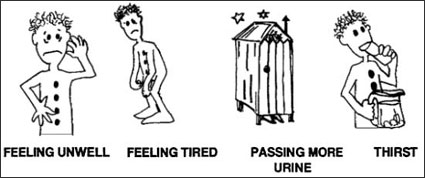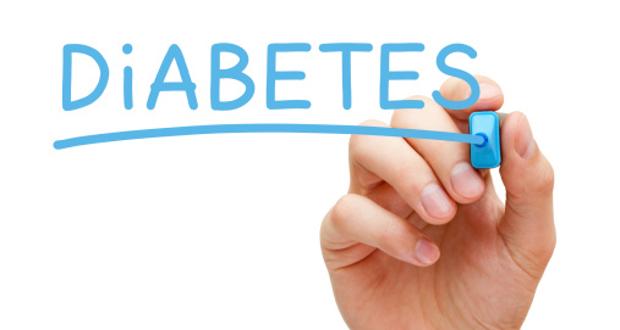
It's difficult to overstate the size of the diabetes epidemic facing the developed world. In the U.S. alone, it affects more than 29 million people, although about 8 million are undiagnosed. Some people are born unable to produce insulin. Those are type 1 diabetics. But about 90% to 95% of diabetics are of the type 2 variety. Type 2 diabetics don't produce enough insulin, don't respond to insulin, or have some combination of both.
A type 2 diabetic's disease typically begins when his or her pancreas becomes unable, or unwilling, to produce enough insulin to keep blood sugar at a low enough level. Often, as the disease progresses, the person becomes less responsive to insulin either created in one's own pancreas or injected.
Type 2 diabetics who fail to respond properly to "old-fashioned" insulin injections have some relatively new options. The GLP-1 agonists such as Victoza fromNovo Nordisk reduce glucagon -- the hormonal yin to insulin's yang -- and stimulate release of the patient's own insulin.

More recent is the SGLT2 class of drugs fromJohnson & Johnson ,AstraZeneca , and partners Boehringer Ingelheim andEli Lilly . Taken as a pill, not an injection, this class of therapy inhibits the kidneys from keeping glucose in the bloodstream, allowing it to be excreted through the urinary tract. While some members of this class are performing better on the market than others, overall the uptake has been impressive.

Becoming the go-to-drug for a disease that affects hundreds of millions worldwideis a goal worth fighting for. Let's check in on these four to see who's winning.
Lousy sales; great dataEli Lilly's SGLT2 inhibitor, Jardiance, would have been last to market in the U.S. by a few months, but an FDA rejection in March 2014, citing manufacturing facility deficiencies on Boehringer's part, delayed it even further.As the third SGLT2 to enter the U.S. market after winning FDA approval in August 2014, it saw sales get off to a slow start. After its first full year of commercialization, Lilly still didn't even mention Jardiance sales in its 2015 annual report.
Image source: Boehringer Ingelheim.
That could change, because last November the company announced terrific results for the drug from a cardiovascular outcomes trial, with over 3,000 patients taking either a placebo or Jardiance along with the standard of care for three years. Adding Jardiance reduced patients' risk of cardiovascular death by 38% and reduced hospitalizations for heart failure by 35%.That's the first time anytherapy for the reduction of blood glucose has shown such a benefit.
Roughly half of all diabetics die from cardiovascular disease,so you might think that that would have led to an uptick of Jardiance sales in the fourth quarter, but it didn't. At about $15 million they were actually a bit lower than the third quarter,although its share of the new-to-brand SGLT2 market recently rose to 25% from 15%.
Perhaps adding cardiovascular benefit information to the drug's label will help, Lilly has already filed a supplementary application that would do just this on both sides of the Atlantic. However, going from last place in sales figures to first might not be that simple.
Better sales; data forthcomingGaining FDA approval in January 2014,AstraZeneca's SGLT2 inhibitor, Farxiga, was second of its class to reach pharmacy shelves in the U.S. -- J&J's Invokana was first. Farxiga is also the second most popular SGLT2 inhibitor, and it's growing sales nicely. Annual sales of Farxiga grew 119% to $492 million last year.
Perhaps the reason physicians haven't jumped for Lilly's Jardiance is that it might not be the only SGLT2 that can lower the risk of cardiovascular events. AstraZeneca is in the middle of a study that's similar to, but larger and longer than, Lilly's. The Declare study is following more than 17,000 patients receiving placebo or Farxiga in addition to standard care for a longer time frame.
Showing a similar or stronger benefit in this larger, longer trial might help Farxiga overtake the front-runner, but it might be too late: The outcome data isn't expected until 2019.
Even better sales; even more data forthcomingFirst to the U.S. market in spring 2013,Johnson & Johnson's SGLT2 inhibitor has left its class contenders in the dust. Part of its success has to do with the quick approval of Invokamet, a combination of common type 2 diabetes treatment metformin and Invokana in August 2014. Last year, annual sales of the Invokana franchise more than doubled to $1.3 billion.
The healthcare heavyweight is also running two outcome studies. The first, involving 4,400 patients, will measure time to cardiovascular events and should read out early next year.Results from another trial, with 4,200 patients assessing kidney damage, along with more cardiovascular info, is expected in 2019.
If I had to guess, I'd say the medical community is assuming Jardiance's cardiovascular, hospitalization, and mortality benefit isn't unique to Lilly's drug, but a classwide benefit. With J&J's Invokana the next to report outcome data, we'll know soon enough.
The best sales; "significant" dataWith diabetes products responsible for a whopping 79% of total sales, it's surprising that Novo Nordisk doesn't have an SGLT2 program.What it does have is the popular GLP-1 agonist, Victoza. Last year, sales of the drug grew by double digits to $2.7 billion.
Since Jardiance posted its impressive mortality benefit, Novo has good reason to be nervous. However, the company has results that show Victoza demonstrated a "statistically significant" reduction of these three things combined: first occurrence of cardiovascular death, non-fatal heart attack, or non-fatal stroke.

Image source: Novo Nordisk.
How significant? You'll need to wait until June to find out. If you find the lack of details in the announcement troubling, you're not alone. I'm not suggesting something's rotten in Denmark, but if the benefit is greater than that shown for Jardiance, I'll eat nothing but pickled herring for a week.
While I'm making predictions, I don't expect much of an increase in Jardiance sales until -- and unless -- J&J's first outcome trial for Invokana throws off less impressive data early next year. If however, Invokana shows a similar, or stronger, benefit than Jardiance, J&J could end up with the most popular drug in one of the world's largest indications.
Price for reference:
Jardiance 10mg 30s = RM150
Jardiance 25mg 30s = RM180
Price for reference:
Jardiance 10mg 30s = RM150
Jardiance 25mg 30s = RM180

where i can buy jardiance 10mg. I`m from KL
ReplyDeletePPUM's PharmUMMC sells the 25mg dose for RM126 for 30 tablets. But u need their doctors to give you the prescription - so show up at the endocrine clinic for an appointment! UMMC is under the MOHE, not the MOH so they charge for some meds.
Delete